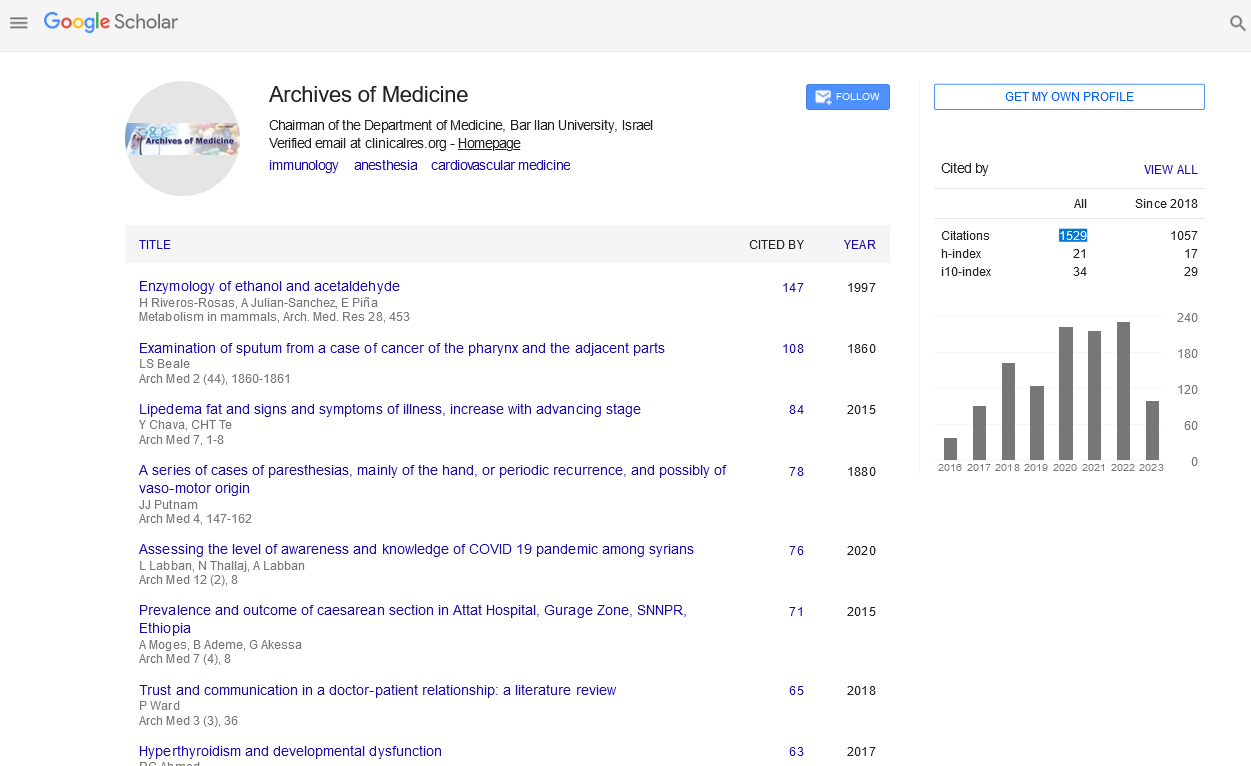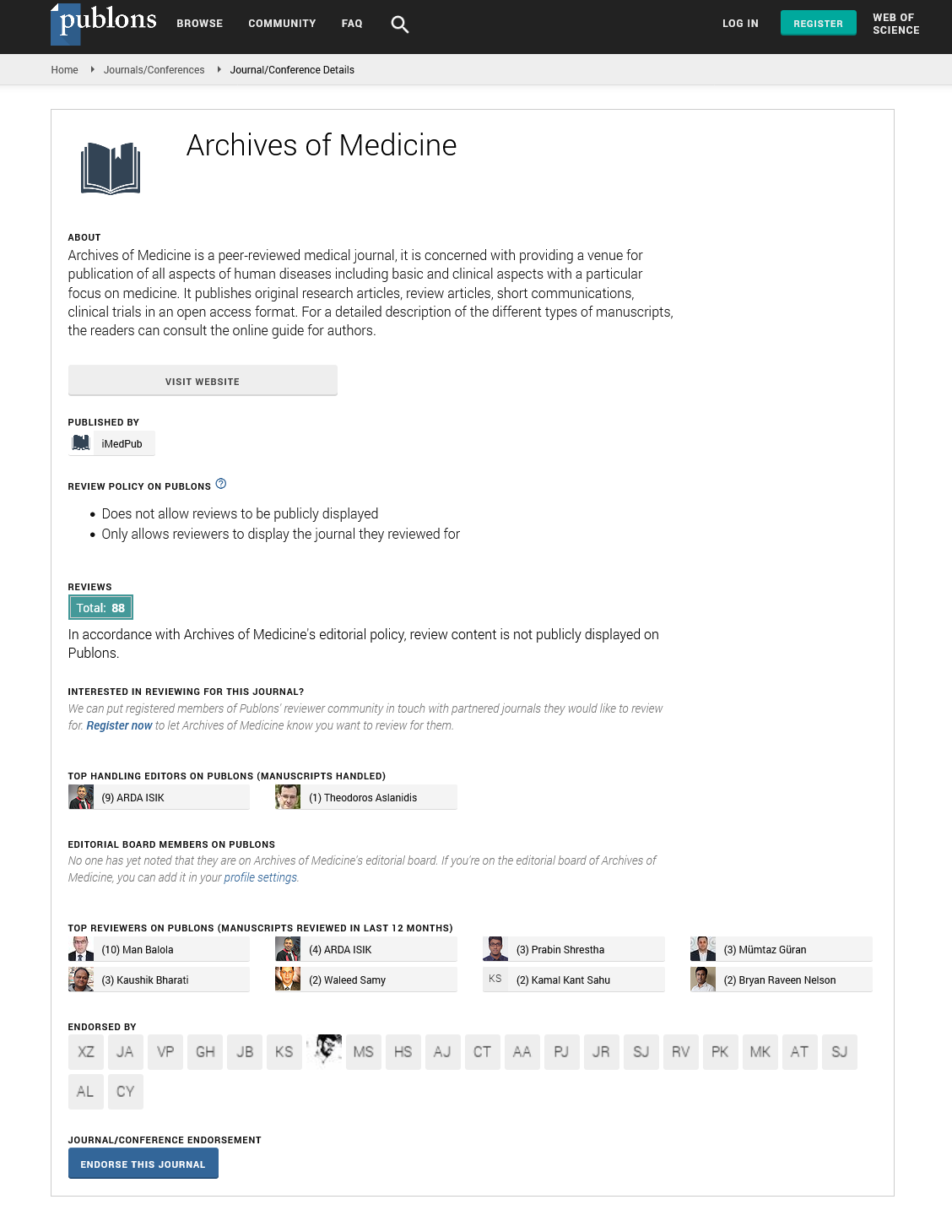Mini Review - (2023) Volume 15, Issue 4
Occupational health: Prioritizing well-being in the workplace
Victor Tayeh*
Department of Occupational Health, Urmia University of Medical Sciences, Urmia, Iran
*Correspondence:
Victor Tayeh, Department of Occupational Health, Urmia University of Medical Sciences, Urmia,
Iran,
Email:
Received: 03-Jul-2023, Manuscript No. ipaom-23-13904;
Editor assigned: 05-Jul-2023, Pre QC No. P-13904;
Reviewed: 17-Jul-2023, QC No. Q-13904;
Revised: 22-Jul-2023, Manuscript No. R-13904;
Published:
29-Jul-2023
Abstract
In today's fast-paced and competitive world, occupational health
plays a critical role in promoting the well-being of individuals in their
workplace environments. With a significant portion of our lives spent
at work, ensuring a safe and healthy work environment is essential
for both employees and employers. Occupational health focuses
on identifying and addressing work-related hazards, promoting
preventive measures, and supporting the physical and mental wellbeing
of workers. In this article, we will explore the importance of
occupational health, its key components, the benefits it offers to
individuals and organizations, and strategies for creating a healthier
and more productive work environment.
Keywords
Occupational health; Hazards; Risk assessments
Introduction
Occupational health encompasses the promotion and
maintenance of physical, mental, and social well-being
in the workplace. It involves identifying and mitigating
workplace hazards, promoting healthy work practices,
and providing appropriate support systems for workers.
Occupational health aims to prevent work-related illnesses,
injuries, and accidents, while also addressing the broader
aspects of employee well-being, such as stress management,
work-life balance, and job satisfaction [1].
Literature Review
Hazard Identification and Risk Assessment: The
first step in ensuring occupational health is identifying
workplace hazards and assessing their potential risks.
This involves evaluating physical, chemical, biological,
ergonomic, and psychosocial factors that may adversely
affect employees' health and safety. By conducting regular
risk assessments, organizations can proactively identify and
mitigate potential hazards.
Preventive Measures and Control Strategies: Once
hazards are identified, preventive measures and control
strategies must be implemented to minimize risks. This
includes implementing engineering controls, administrative
controls, and personal protective equipment to create a safe
working environment. Training programs and awareness
campaigns can educate employees on proper safety
procedures, emergency protocols, and the importance of
adhering to preventive measures [2].
Discussion
Occupational health services: Provision of
comprehensive occupational health services is crucial for
promoting employee well-being. These services may include
pre-employment medical assessments, periodic health
examinations, counseling and support for mental health
issues, vaccinations, and health promotion programs.
Additionally, organizations can establish occupational
health departments or work in collaboration with external
healthcare providers to ensure the availability of timely and
quality healthcare for employees.
Ergonomics and workplace design: Ergonomics
focuses on optimizing the design of workspaces, equipment,
and processes to enhance worker comfort, efficiency, and
safety. By considering ergonomic principles, organizations
can minimize musculoskeletal disorders, repetitive strain injuries, and other work-related health problems.
Ergonomic assessments and modifications in workplace
design, such as adjustable furniture, proper lighting, and
well-designed workstations, contribute to a healthier and
more productive work environment.
Employee health and well-being: Prioritizing
occupational health leads to improved employee health and
well-being. By reducing workplace hazards and promoting
preventive measures, organizations can minimize workrelated
injuries, illnesses, and absenteeism. Employees
who feel safe and supported in their work environment are
more likely to experience higher job satisfaction, increased
productivity, and better overall physical and mental health
[3].
Enhanced productivity: A healthy workforce is a
productive workforce. When employees are physically
and mentally well, they are more engaged, focused, and
motivated. Occupational health programs that emphasize
preventive care, stress management, and work-life balance
contribute to higher levels of job satisfaction, employee
morale, and job retention. This, in turn, leads to increased
productivity and organizational success.
Cost savings: Prioritizing occupational health can result
in significant cost savings for organizations. By preventing
work-related injuries and illnesses, companies can reduce
medical expenses, workers' compensation claims, and
insurance premiums. Moreover, a healthier workforce
translates into lower absenteeism rates, decreased turnover,
and increased employee loyalty, reducing recruitment and
training costs.
Compliance with regulations and legal
requirements: Governments and regulatory bodies have
established guidelines and regulations to ensure the safety
and well-being of employees in the workplace. Prioritizing
occupational health enables organizations to comply with
these regulations and legal requirements, reducing the risk
of penalties, lawsuits, and damage to the organization's
reputation. Demonstrating a commitment to occupational
health also enhances the organization's image as a
responsible and caring employer [4].
Leadership commitment: Strong leadership
commitment is vital for promoting occupational health.
Leaders must actively participate in and promote
occupational health programs, ensuring that they are
integrated into the organization's policies, practices, and
culture. By prioritizing employee well-being and setting
a positive example, leaders foster a supportive work
environment.
Employee participation and engagement: Involving
employees in the development and implementation of
occupational health initiatives enhances their engagement
and ownership. Organizations can establish joint health
and safety committees or employee wellness committees,
providing a platform for employees to voice their concerns,
contribute ideas, and collaborate on occupational health
programs.
Training and education: Comprehensive training and
education programs are essential for creating awareness
and imparting necessary knowledge and skills related to
occupational health. Organizations should provide regular
training sessions on safety procedures, emergency response,
ergonomics, stress management, and other relevant
topics. By investing in employee education, organizations
empower individuals to make informed decisions and take
responsibility for their own health and safety.
Work-life balance and stress management: Organizations should promote work-life balance and
implement strategies to manage workplace stress effectively.
This can include flexible working arrangements, employee
assistance programs, stress management workshops, and
promoting a culture that values work-life integration.
Supporting employees in achieving a healthy work-life
balance enhances job satisfaction and reduces the risk of
burnout and mental health issues [5].
Continuous monitoring and evaluation: Occupational health programs should be continuously
monitored and evaluated to assess their effectiveness.
Regular assessments of workplace hazards, employee health
data, and feedback from employees can provide valuable
insights for program improvement. Organizations should
also stay updated with the latest research, best practices,
and regulatory changes to ensure their occupational health
initiatives remain current and relevant [6].
Conclusion
Occupational health is a critical aspect of creating
a safe, healthy, and productive work environment. By
prioritizing the well-being of employees, organizations can
enhance employee satisfaction, productivity, and overall
organizational success. Through hazard identification,
preventive measures, comprehensive health services,
and supportive workplace policies, occupational health
programs play a pivotal role in minimizing work-related
injuries, illnesses, and psychosocial issues. By fostering a
culture of safety, continuous improvement, and employee
engagement, organizations can reap the benefits of a
healthier workforce and contribute to a sustainable and
prosperous future for both individuals and organizations
alike.
Acknowledgement
None.
Conflict of Interest
None.
References
- Rollin L, Darmoni S, Caillard JF, et al. Searching for high-quality articles about intervention studies in occupational health-what is really missed when using only the medline database?. Scand J Work Environ Health. 2010:484-487.
Google Scholar, Crossref, Indexed at
- Cropley M, Steptoe A. Social support, life events and physical symptoms: A prospective study of chronic and recent life stress in men and women. Psychol Med. 2005;10(4):317-325.
Google Scholar, Crossref
- Luthans F, Avolio BJ, Avey JB, et al. Positive psychological capital: Measurement and relationship with performance and satisfaction. Pers Psychol. 2007;60(3):541-572.
Google Scholar, Crossref
- Maslach C, Jackson SE. "The measurement of experienced burnout." J Organ Behav. 1981;2(2):99-113.
Google Scholar, Crossref, Indexed at
- Fernández-Puig V, Mayayo JL, Lusar AC, et al. Assessing work health of subsidised state school teachers: Teachers' health questionnaire (manuscript in Spanish). Rev Psicol Trab. 2015;31(3):175.
Google Scholar, Crossref
- Renshaw TL, Long AC, Cook CR. Assessing teachers’ positive psychological functioning at work: Development and validation of the teacher subjective wellbeing questionnaire. Sch Psychol Q. 2015 ;30(2):289.
Google Scholar, Crossref, Indexed at






